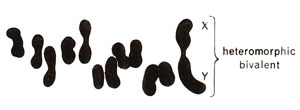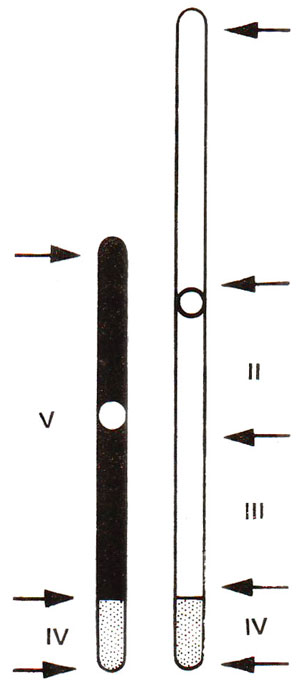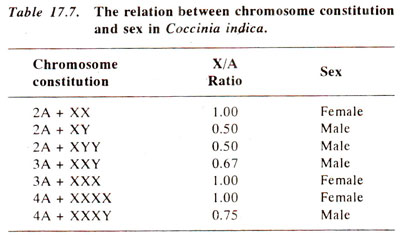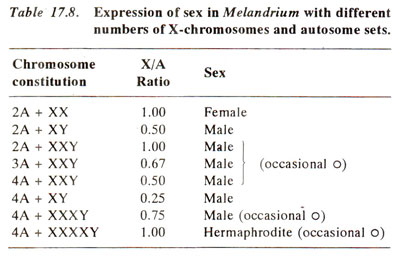Sex determination in Coccinia and Melandrium

Fig. 17.16. Chromosomes at meiotic metaphase I in a male Melandrium album plant, showing eleven (11) normal autosomal bivalents and one heteromorphic bivalent involving X and Y chromosomes (drawn from a photograph by Warmke, 1946).

Fig. 17.17. X and Y chromosomes in Melandrium album showing different segments (I, II, III, IV, V) controlling different stages of sex determination and sex differentiation (see text for details).
In Melandrium, Y chromosome is longer than X-chromosome, and they form a heteromorphic bivalent at meiosis (Fig. 17.16). Plants having different individual fragments of Y chromosome were also studied and as a result, it was possible to divide Y and X-chromosomes into five different segments. These segments are known to control different stages of development of sex organs (Fig. 17.17).

Fig. 17.16. Chromosomes at meiotic metaphase I in a male Melandrium album plant, showing eleven (11) normal autosomal bivalents and one heteromorphic bivalent involving X and Y chromosomes (drawn from a photograph by Warmke, 1946).

Fig. 17.17. X and Y chromosomes in Melandrium album showing different segments (I, II, III, IV, V) controlling different stages of sex determination and sex differentiation (see text for details).
In view of the above, while comparing Drosophila with Coccinia and Melandrium, we find that male determining genes are present on autosomes in Drosophila, but on Y-chromosome in these plants.






